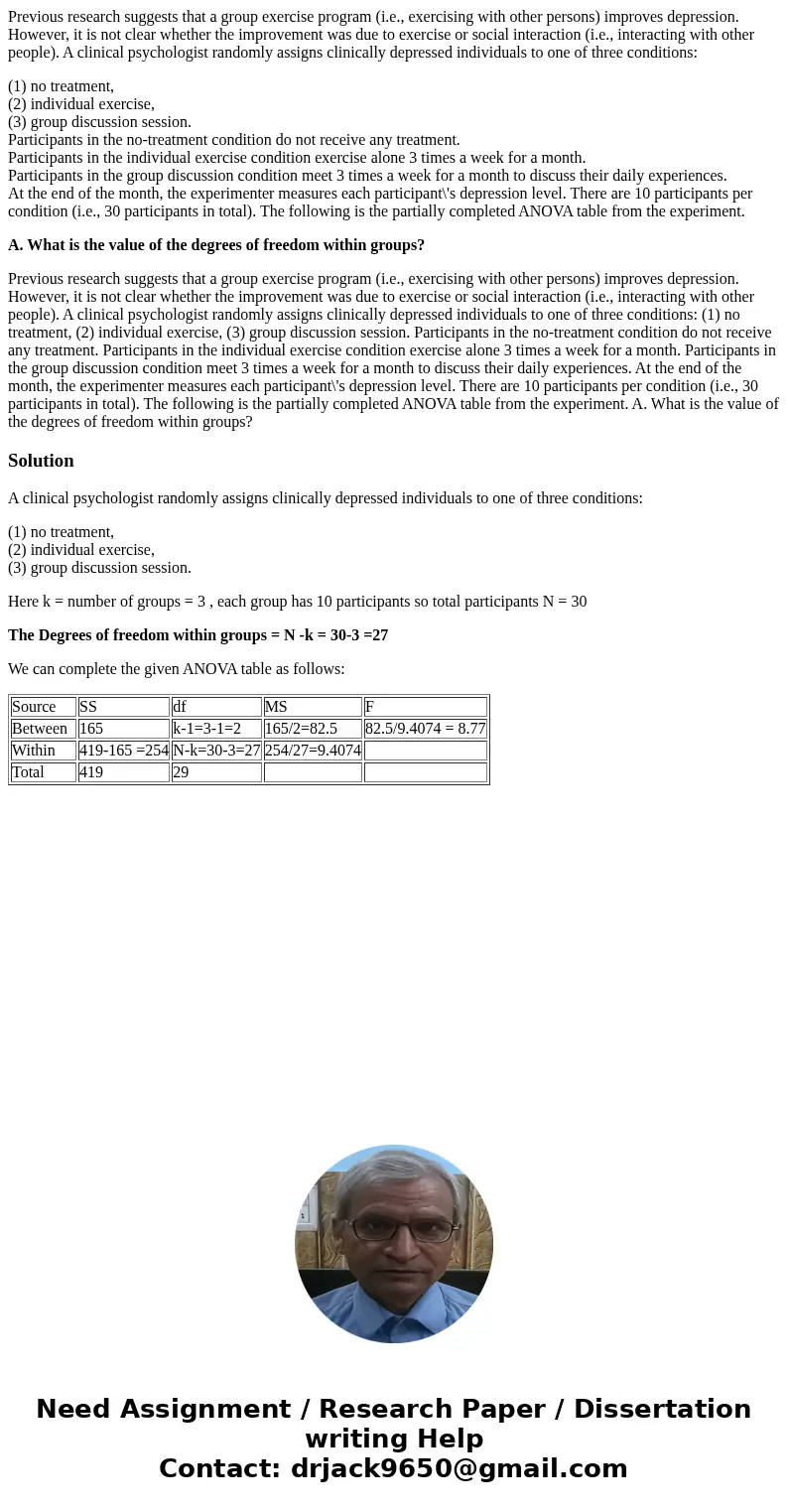Previous research suggests that a group exercise program ie
Previous research suggests that a group exercise program (i.e., exercising with other persons) improves depression. However, it is not clear whether the improvement was due to exercise or social interaction (i.e., interacting with other people). A clinical psychologist randomly assigns clinically depressed individuals to one of three conditions:
(1) no treatment,
(2) individual exercise,
(3) group discussion session.
Participants in the no-treatment condition do not receive any treatment.
Participants in the individual exercise condition exercise alone 3 times a week for a month.
Participants in the group discussion condition meet 3 times a week for a month to discuss their daily experiences.
At the end of the month, the experimenter measures each participant\'s depression level. There are 10 participants per condition (i.e., 30 participants in total). The following is the partially completed ANOVA table from the experiment.
A. What is the value of the degrees of freedom within groups?
Previous research suggests that a group exercise program (i.e., exercising with other persons) improves depression. However, it is not clear whether the improvement was due to exercise or social interaction (i.e., interacting with other people). A clinical psychologist randomly assigns clinically depressed individuals to one of three conditions: (1) no treatment, (2) individual exercise, (3) group discussion session. Participants in the no-treatment condition do not receive any treatment. Participants in the individual exercise condition exercise alone 3 times a week for a month. Participants in the group discussion condition meet 3 times a week for a month to discuss their daily experiences. At the end of the month, the experimenter measures each participant\'s depression level. There are 10 participants per condition (i.e., 30 participants in total). The following is the partially completed ANOVA table from the experiment. A. What is the value of the degrees of freedom within groups?Solution
A clinical psychologist randomly assigns clinically depressed individuals to one of three conditions:
(1) no treatment,
(2) individual exercise,
(3) group discussion session.
Here k = number of groups = 3 , each group has 10 participants so total participants N = 30
The Degrees of freedom within groups = N -k = 30-3 =27
We can complete the given ANOVA table as follows:
| Source | SS | df | MS | F |
| Between | 165 | k-1=3-1=2 | 165/2=82.5 | 82.5/9.4074 = 8.77 |
| Within | 419-165 =254 | N-k=30-3=27 | 254/27=9.4074 | |
| Total | 419 | 29 |

 Homework Sourse
Homework Sourse